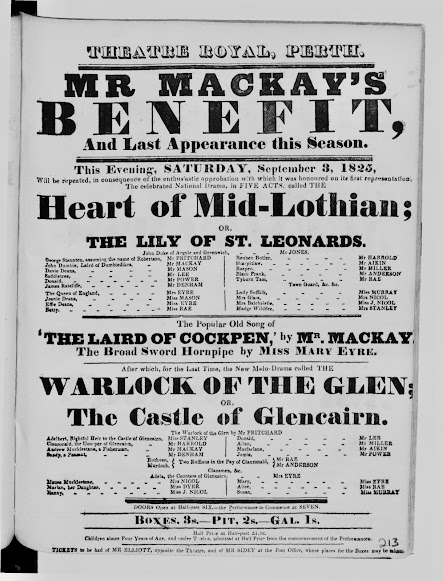A decade or two ago, I dove deeply into the careers and lives of the young ladies who, in their time, had been member of the celebrated Lydia Thompson troupe of, so-called, British blondes. I wrote up quite a few of them, then published the principal ones in a European scholarly journal, and abandoned the rest of the work.
Then, some years later, I started on a history of burlesque. A factual one was, and is, needed. But I abandoned that too, when a chunk of what I already written was drowned during my computer's encounter with a dish of Dorper Lambjuice.
Today I came upon a photo of a British burlesque beauty who was never a member of the Thompson troupe, but, rather, was promoted instead as a rival to Lydia. In America. Fatally. For her. Which was very unfortunate, for she was indeed one of the best burlesque girls in her home land ... if only she has stayed home, she might have had a happy career and a happy life. But from the moment she left London town ...
Her name was Elise Holt. Properly Elizabeth Harriet HOLT born 11 July 1847, in St Pancras, the second daughter of one Thomas Holt, who ran a manufactuary of iron bedsteads, and his wife Eleanor or Ellen Ann née Dowdell.
She apparently learned dancing from 'Madame Louise' (Louise MILLER), a former soloist and maîtresse de danse at Drury Lane and at the Italian Opera House, and the teacher of many a good English danseuse, and is said to have made her first stage appearance under her aegis 'at the Surrey'. Well, Mme Louise hada hand in the panto Old King Cole at the Surrey in 1863, and her featured girlie was Miss Celia Reynolds. Miss Reynolds was to become 'Minnie Venn', best remembered as one of the paramours of composer Teddy Solomon. But Elise wasn't there. Perhaps she was, earlier. Now she was at the Victoria, playing in Giselle and the Phantom Night Dancers as a little Cupid, and dancing Harlequina. The role of Giselle was taken by Ada Harland, who would become one of the famous 'original big four' in the Thompson troupe. And a certain 'Miss [Nellie] Farren'. Oddly, Celia/Minnie was billed as 'pupil of Madame Louise', but Elise wasn't. Ah, I see that another source says 'the Surrey Gardens'. Not so easily traceable.
Anyway we can count the Victoria as the first meaningful engagement in Elise's career. She would remain there for more than a year, acting, singing, and above all dancing in the variegated programmes produced. At Easter, Madame Celeste came for a season 'supported by the whole strength of the company'. Misses Farren and Maria Daly got the girl's parts. It wasn't till the production of the drama Troubled Waters, or The Family Secret at the end of June that Elise had a noticeable part. A drama? Well, she was cast as Lotti Lawson 'a strolling player in the backwoods' and noticed for her 'saucy little mannerisms and spirited dancing'. 'Miss Daly has a song and Miss Holt a dance' .. and the drama managed to sneak in a negro minstrel act.
Miss Daly was featured in another piece, The Detective, or A Ticket of Leave in which Elise played a boy, and when Miss Daly took the lead in another drama Elise and Ellen Powell featured in a ballet divertissement. When Life in Lambeth was put forwarded she seconded Miss Powell in a rustic ballet. And then it was panto time, and once again Elise was Harlequina (with Miss Powell as Columbine) as well as 'the Dog Star' in Baron Munchausen, or Harlequin and the Mountains of the Moon. But, come March, it was back to the dramas -- I see Elise cast in The Octoroon -- and at Easter, Miss Holt, in one of the few good decisions of her professional life, moved on.
The wage was 15 shillings a week. But the engagement was at the Swanborough family's Strand Theatre, the bloomingest burlesque house in London's West End. And she opened her stay there in the title role of a 'six-nights only' revival of their hit Aladdin or the Wonderful Scamp. Elise had found her metier, and the Strand Theatre had found a player ideally suited to the pieces they produced. 'Excellent', 'saucy', 'lively style and abundant confidence', 'dancing encored'....
 |
| Miss Raynham |
 |
| Ada Swanborough |
Aladdin stayed on the bill for an entire month. Of course, Miss Holt was not to be leading lady at the Strand. Ada Swanborough of the management family was in loco stellaris, the top 'boy', Alice Raynham, firmly installed ... but she was not too far below the title. And there, for the best three years of her career, she would remain, occasionally in a play (Snatches in Upstairs and Downstairs, Orange Blossoms) but above all, radiantly out-front in burlesque. The Earl of Surrey in Windsor Castle, the blind fiddler in Mazourka, Oneiza in Mazeppa, Don Alva in L'Africaine, Cupid in Pygmalion, Mercury in Paris, Kenilworth, Pierre Gringoire in Esmeralda, Fra Diavolo, Albert Tell in Tell, Hassan in The Caliph of Baghdad, de Boisey in The Field of the Cloth of Gold. 'One of the cleverest dancers and most piquant actresses on the stage'. One of. The star of the last piece was Lydia Thompson.
And she had arrived at the Strand just as it reached the peak of its powers and prosperity. With Windsor Castle and L'Africaine it had produced what might be regarded as the first English equivalents of the new French opéra-bouffe. With The Field of the Cloth of Gold it had boosted Lydia Thompson up the next rung towards mega-stardom ..
Elise was not a Lydia Thompson. Indeed, she had similar talents, but a different projection. Let's just say, Elise was more out-front, less subtle, less winning. And that is part of the reason why, especially when she got to America and became broader in her delivery, she played to a different kind of audience. The 50 cent one, rather than the $2 one.
As in Lydia's case, America was the fault of a man. And, yes, eventually a husband. Which was a bit of a nuisance because whereas Lydia had lost her husband to a racing accident, Elise still had one. And two pre-marital babies.
He was Henry Gordon Palmer, an Irishman, son of a colonel, briefly attached to the Royal Artillery (he squeaked into Woolwich in last place), and dragged to court in 1864 for theft of a £10 note. Her first child Arthur Henry Holt Gordon was born 17 December 1866, the second, Catherine Elise Holt Palmer on 7 September 1868. After which they got married (23 November 1868). I don't believe they ever divorced, nor do I know what became of the babies, but they both married or 'married' elsewhere ...
But the man who messed up Elise's life had only good intentions. Like, making money. His name was Harry H Wall and I am not going to attempt to unravel him, as there were several Harry Walls (one of whom was the husband of singer Annie Adams) on both sides of the Atlantic. Our one was the one who was a dramatic agent in New York. 27 June 1868 he sailed for London on The City of Paris and returned 7 December bringing with him that latest fashion in the theatre world, a troupe of British blondes. Elise Holt, vocalists Emily and Mary Pitt, Emma Grattan ... and a burlesque from London's Holborn Theatre, Lucrezia Borgia MD or, The Grand Doctoresse.
While Wall announced his troupe for The Olympic Theatre, the New York gossip press fulfilled its part: 'her rare beauty makes her very conspicuous' etc etc. They didn't open at the Olympic. They didn't open 'on Broadway'. They opened indifferently at the Boston Continental. But they trudged on to New York's Waverley Theatre. Indifferently. Elsie had laryngitis. She was 'off'. And 'off'. They fled to Philadelphia. They flopped. Elise's blonde hair and 14 1/2 inch calves (padded?) weren't pulling them in. They fled to California, downmarketing as they went ('her costume consisted of three inches of white silk tightly girt' , 'the most outré kind of burleque'), but persisting with their three-wheeled burlesque in which the title-role had devolved on to Wall. They tried a report that Elise has whipped a newspaper editor ... then they set out for New Orleans, Cincinnati, Albany ... and threw in the sponge.
Mr and Mrs Wall (as they allegedly now were) headed for London, and the Strand Theatre, where the Swanboroughs welcomed Elise back at £15 per week (and an extra 5 for the husband). Now she was Darnley in The Field of the Cloth of Gold ... But times had changed, and Elise had undoubtedly coarsened in her delivery since the old days. The theatre closed and Wall sued for wages. He won, but the doors of the Strand would be closed henceforth to them.
Elise played in The Mistletoe Bough at the Adelphi at Christmas 1870, at Bath for panto 1871 (Valentine in Valentine and Orson), took over for Mrs John Wood at the Adelphi briefly, and fulfilled an engagement at the Alhambra playing in Clodhopper's Fortune with Harry Paulton. Christmas 1872 was Birmingham (Dick Tucker in Twinkle Twinkle). I think she may have, by now, been too broad even for Bimingham.
It hadn't worked, ths return to sources. They packed up, and, in September 1873, headed back to New York for an engagement at Wood's Museum (which was thoroughly not what it had been in the days of Lydia and Ixion) ... It was worse than before. They were reduced to minor houses ... In January 1874, they were playing New Orleans when Elise got ill.
In 1887, when another damsel launched a girlie troupe as 'Elise Holt's Exquisites', the editor of The Clipper remarked : 'not the GREAT Elise'. Well, the only thing 'great' about Lizzie Holt was her (padded?) calves. She had been a fine second boy/girl in good burlesque who found -- like Lisa Weber and Ada Harland of the Thompson quartet -- that when promoted to top-of-the-bill, she didn't quite cut it. And then, of course, the man ...
Father Thomas died, also, in 1874. He had re-married after Eleanor's death (1863). In the 1871 census Elise's little daughter can be seen living with him in Newington Causeway under the name 'Catherine P Holt'. More than that I cannot tell ...
PS Somewhere in my divan drawers I've got some broadsheets of Elise's greatest Strand successes. I will get them out and add them in here ... another day :-)




























































